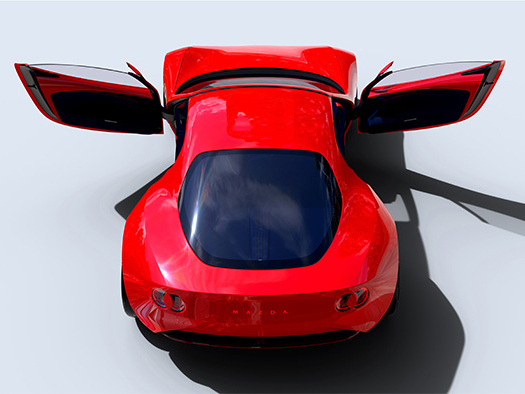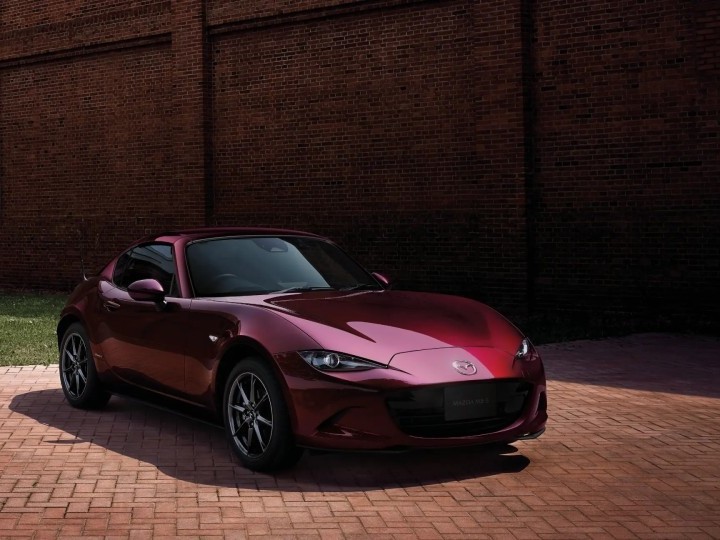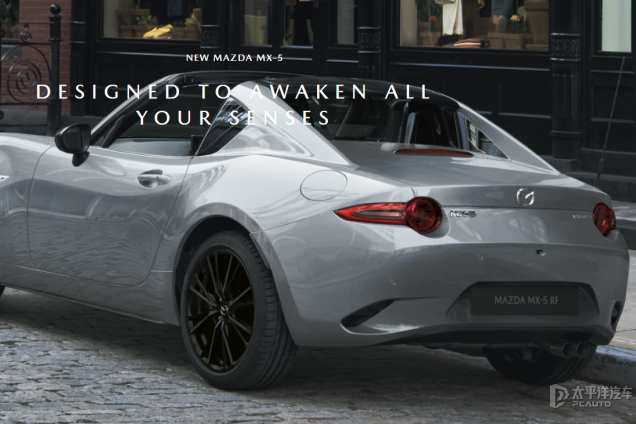Q
How big is the gas tank on a 2020 Miata?
The 2020 Mazda MX-5 Miata comes with a 45-liter fuel tank. This design strikes a balance between keeping weight down and meeting range needs, which fits perfectly with its identity as a compact sports car. For Malaysian owners, that 45-liter tank should give you roughly 400 to 500 kilometers of range for city commuting or weekend mountain road blasts—though actual fuel economy will, of course, vary based on your driving style and the conditions.
It's worth noting that Miatas have always been about balancing fuel efficiency with driving fun. Mazda's SkyActiv Technology plays a big role here, optimizing engine efficiency and cutting weight to squeeze even more kilometers out of each liter. Malaysia's hot and rainy climate can be tough on fuel tanks and fuel systems, but the MX-5's corrosion-resistant tank design and solid sealing have proven reliable, making it well-suited to local conditions.
If you're planning a long road trip, though, it's smart to map out your petrol stations in advance. The MX-5's low-slung sports car stance means the fuel filler neck sits a bit high, so you might need to pay a little extra attention to the angle of the nozzle at some of Malaysia's older petrol stations.
Special Disclaimer: This content is published by users and does not represent the views or position of PCauto.
Related Q&A
Q
What is the cheapest convertible for 2025?
Looking to drop the top without dropping a fortune in 2025? The Mazda MX-5 Miata is expected to hold onto its crown as the most affordable convertible around. This legendary two-seat rear-wheel-drive roadster has always been about big fun at a reasonable price tag, and in Malaysia, you're looking at around RM200,000. Under the hood, you've got the choice of 1.5L or 2.0L naturally aspirated engines, paired with a lightweight electric soft top. It's easy on fuel and a breeze to maintain – classic Miata virtues.
Next up, keep an eye out for the production version of the MG Cyberster electric convertible concept, set to hit Southeast Asia soon. Pricing is expected to start around RM250,000. This one goes for a folding hardtop and promises a 500km range, making it a solid pick for tech-savvy young buyers who want to stand out.
Now, a quick heads-up for our tropical climate: convertible tops need a little extra TLC. Soft tops should get regular doses of UV protectant to keep them looking good, while hard tops mean keeping an eye on hinge lubrication to ensure smooth operation. When shopping around in Malaysia, don't forget to check out the after-sales network. Mazda's got a pretty solid spread of service centers nationwide. For those considering the newer electric brands, make sure you're comfortable with the charging infrastructure available too.
Lastly, insurance for convertibles typically runs 15-20% higher than their hardtop counterparts, thanks to the more complex (and costly) top mechanisms. Definitely a good idea to get a quote from your insurer before signing on the dotted line.
Q
How much is a 2020 Mazda MX 5 Miata worth?
The 2020 Mazda MX-5 Miata is currently fetching prices in Malaysia's used car market somewhere between RM120,000 and RM180,000. Of course, the exact figure hinges on factors like the car's overall condition, mileage, trim level, and whether it still has any remaining factory warranty. For instance, the higher-spec RF hardtop variant typically commands a 10-15% premium over the soft-top version.
This little roadster has always been a hit with driving enthusiasts, thanks to its lightweight construction, pinpoint handling, and that classic rear-wheel-drive layout. It really comes alive on Malaysia's twisty mountain roads, showing off its nimble character. What's also worth mentioning is that the MX-5 holds its value relatively well among small sports cars. A big part of that is Mazda's solid after-sales network in Southeast Asia, and let's not forget, maintenance costs tend to be more wallet-friendly compared to European rivals.
If you're in the market, my advice is to check out Mazda Malaysia's certified pre-owned program. Those cars go through a 152-point inspection and come with a 1-year extended warranty. And hey, make sure to test the convertible top's seal tightness thoroughly—critical in Malaysia's rainy climate. Now, if you're considering a parallel import, just be absolutely sure it's JPJ-approved and comes with all the proper import documentation. Those might be around 10% cheaper, but the warranty terms can vary, so read the fine print.
Q
Does the 2020 Miata have Apple CarPlay?
The 2020 Mazda MX-5 Miata does come with Apple CarPlay in the Malaysian market, but it's worth noting that this feature isn't standard across all trims. Typically, you'll find it on higher-spec models or as part of an optional package, so it's always a good idea to check with your local dealer for the exact specs before making a purchase. Apple CarPlay is a game-changer for iPhone users, letting you seamlessly hook up your phone to the car's infotainment system. It makes using navigation, streaming music, or taking calls a breeze, really upping the convenience factor when you're behind the wheel.
Mazda's infotainment system, Mazda Connect, has been getting regular updates over the years. Beyond CarPlay, some models also support Android Auto, so no matter what phone you rock, you're covered. For Malaysian drivers who live for that sporty, engaging drive, the Miata's already legendary for its sharp handling. Toss in these smart connectivity features, and it becomes that much more practical for everyday use too. If your budget stretches a bit further, keep an eye out for the post-2020 facelift models—they've got bigger screens and smoother operation, which is always nice.
And hey, let's not forget Malaysia's hot and rainy climate can be tough on convertibles. To keep that CarPlay (and everything else) running smoothly long-term, make sure you regularly check the soft top's sealing performance and the waterproofing on the electrical bits. A little extra care goes a long way!
Q
What is the 2020 Mazda MX-5?
The 2020 Mazda MX-5 is the facelifted version of the fourth-generation MX-5 (codenamed ND) from Mazda. This iconic two-door roadster has built a reputation in the Malaysian market for its handling thrills and lightweight design. The 2020 update primarily focuses on subtle exterior tweaks and equipment upgrades. For instance, LED headlights and taillights now come as standard across the range, and there's a fresh new paint option: Polymetal Gray Metallic. Inside, the minimalist, sporty vibe remains, featuring a 7-inch touchscreen that supports Apple CarPlay and Android Auto.
Under the hood, you've got the choice of 1.5L or 2.0L Skyactiv-G naturally aspirated engines, paired with either a 6-speed manual or automatic gearbox. The rear-wheel-drive setup and that near-perfect 50:50 weight distribution make it seriously nimble through the corners. What's really cool about the MX-5 in Malaysia is its sub-1-tonne kerb weight and short wheelbase – it's absolutely tailor-made for those twisty local mountain roads. And let's not forget the electric soft-top roof, which works a treat in our tropical climate.
As the world's best-selling two-seat roadster, the 2020 model also meets stricter emissions standards while keeping that strong value-for-money proposition. For Malaysian enthusiasts chasing pure driving feel, this car does double duty: it's practical enough for daily commutes, yet offers loads of potential for modification. It's pretty much the benchmark in the entry-level sports car segment.
Q
What are the models of the Mazda mx5 2020?
The 2020 Mazda MX-5 hits the Malaysian market with two main trim options: the soft-top Roadster and the retractable fastback RF. Both variants come with your choice of a 1.5-liter or 2.0-liter Skyactiv-G naturally aspirated engine, paired with either a slick 6-speed manual or a smooth 6-speed automatic transmission. The 1.5-liter is the pick for those keeping an eye on fuel efficiency, while the 2.0-liter steps things up with more grunt for a livelier drive.
What really makes the MX-5 stand out is its lightweight build, pinpoint handling, and rear-wheel-drive layout—total catnip for driving enthusiasts. It’s right at home carving through Malaysia’s twisty mountain roads or cruising along coastal highways, serving up a ton of driving fun.
For 2020, Mazda didn’t skimp on the good stuff either. LED headlights, a 7-inch touchscreen with Apple CarPlay and Android Auto, and active safety tech like blind-spot monitoring and rear cross-traffic alert all come standard, making it way more practical for daily use than you might expect from a sporty roadster.
And let’s not forget the value factor. The MX-5’s pricing in Malaysia is pretty reasonable, and maintenance costs won’t break the bank, cementing its spot as a top pick in the entry-level sports car scene. Plus, that classic KODO: Soul of Motion design language keeps it looking sharp, staying true to Mazda’s knack for sleek, timeless style.
Q
What is the fuel consumption of Mazda MX5 2020?
The 2020 Mazda MX-5 delivers some pretty impressive fuel economy figures, though your actual mileage will vary a bit depending on the transmission and how you drive it. The manual gearbox version checks in at around 7.1 liters per 100 kilometers combined, while the automatic is slightly thriftier at about 6.9 liters/100km. Under the hood, you've got Mazda's Skyactiv-G 2.0-liter naturally aspirated engine – it's not just about sipping fuel, though; this thing knows how to make driving fun too, which is perfect for Malaysian sports car fans.
A big part of the MX-5's efficiency game is its lightweight build – we're talking around a tonne here. Pair that with the car's sharply tuned chassis, and you've got a machine that dances through corners with real agility. Now, if you're tooling around Malaysian city streets, you might see those numbers creep up a touch, but hit the highway for some cruising, and the fuel consumption drops even more.
What's really cool about Mazda's Skyactiv tech is that it doesn't just optimize for MPGs; it also sharpens up the throttle response. So the MX-5 keeps that driving excitement alive while still being easy on the wallet at the pump. If you're someone who really watches the fuel gauge, a few tips: keep up with regular servicing, use the right oil, and drive sensibly – all that stuff helps eke out even better efficiency.
The MX-5 has always been a hit in Malaysia, and it's easy to see why. This classic roadster isn't just about being economical; it's about that pure, unfiltered driving feel and its standout design. It's the whole package, really.
Q
What kind of engine is in the 2020 Mazda Miata?
The 2020 Mazda Miata – known as the MX-5 here in Malaysia – packs a Skyactiv-G 2.0-liter naturally aspirated four-cylinder petrol engine under its hood. This powerplant features an aluminum block and cylinder head, cranking out 181 horsepower (135 kilowatts) and 205 Newton-meters of peak torque. Mated to either a 6-speed manual or 6-speed automatic gearbox, it delivers sharp throttle response and linear power delivery – a perfect match for the MX-5's lightweight chassis and sporty setup.
What really makes this Skyactiv-G engine stand out is its high 13:1 compression ratio, which optimizes combustion efficiency to balance performance with fuel economy. That's a big win for Malaysian driving enthusiasts who crave fun without breaking the bank at the pump. Sure, naturally aspirated engines might not hit the peak torque figures of turbos, but the power here is smooth and immediate – exactly what you want when carving through corners to truly feel the MX-5's legendary handling. Plus, the simpler NA design means lower maintenance costs, which is always a plus for daily driving in Malaysia's tropical heat.
At the end of the day, the MX-5's engine is all about the driver – staying true to Mazda's "Jinba Ittai" (horse and rider as one) philosophy that makes this little roadster a timeless classic.
Q
What size battery is in the 2020 Miata?
The 2020 Mazda MX-5 Miata (ND generation) comes factory-equipped with a Panasonic EFB (Enhanced Flooded Battery) unit. It's the Q-85 model, rated at 12V and 45Ah, and it's a lightweight design that complements the car's sporty character. Now, here's the thing about these batteries – especially if you're in a hot climate like Malaysia's – you've got to keep an eye on that electrolyte level regularly. And try not to drain it too much if you want it to stick around longer.
For MX-5 owners in Malaysia looking to replace their battery, I'd stick with an EFB that matches the original specs. Or, if you're willing to spend a bit more, an AGM (Absorbent Glass Mat) battery is a solid upgrade. AGMs handle the heat better and have better cycling ability, but yeah, they'll hit your wallet harder too.
One quirk with the MX-5 is that the battery lives in the trunk. It's a smart move for weight distribution, no doubt, but swapping it out means pulling apart some interior trim. Trust me, that's a job best left to the pros. And if you're leaving the car sitting for a while, especially in that hot, humid weather, grab a battery tender. The last thing you want is to come back to a dead battery – those conditions make them drain faster on their own.
Q
Does the 2020 Miata have remote start?
The 2020 Mazda MX-5 Miata doesn't come with remote start from the factory. This car's all about that pure driving feel, so a lot of tech features like remote start just aren't high on its priority list. That said, some Malaysian owners have gone the aftermarket route, getting compatible remote start systems installed at third-party shops. Just a heads-up though – this might mess with your original electrical warranty.
As a classic roadster, the MX-5 Miata's bread and butter is its lightweight body, pinpoint steering, and that Skyactiv 2.0L naturally aspirated engine. These are the things that make it an absolute blast to whip around those Malaysian mountain roads. If remote start is a must-have convenience for you, I'd definitely chat with your local dealer about the latest model year specs. Since 2023, Mazda's official app-based remote control services have started rolling out for the MX-5 in some markets, but exactly what you get depends on the regional variant.
In Malaysia's hot weather, firing up the car remotely to cool it down beforehand does sound pretty handy. But if you do go the modification route, make sure you use certified parts to avoid any electrical headaches. At the end of the day, keeping that original flavor MX-5 driving experience is still what makes this car special.
Q
How much is a 2020 Miata?
The 2020 Mazda MX-5 Miata's price in Malaysia really depends on the condition, specs, and mileage. When new, it was going for around 250k to 300k Ringgit. Now, on the used market, you're looking at roughly 180k to 250k Ringgit, give or take, depending on how well it's been maintained and any extra goodies it might have.
What makes the MX-5 Miata stand out is its lightweight build and that sweet rear-wheel-drive handling – it's *perfect* for carving up Malaysia's twisty mountain roads or cruising along coastal highways. Plus, with either the 1.5L or 2.0L Skyactiv-G naturally aspirated engines, it's pretty fuel-efficient too, hitting that sweet spot for local buyers who want both practicality and a fun drive.
You've got options between the soft-top and the hard-top RF version. The hardtop's a bit better for noise insulation and security, but let's be real – the soft-top just screams that pure open-air roadster vibe.
Another big plus? There's a solid community of MX-5 owners here in Malaysia, so used parts and modding gear aren't hard to find. Maintenance costs are pretty reasonable too, making this a really solid value pick for anyone looking to get into a fun, entry-level sports car.
Popular Cars
Model Year
Car Compare
Car Photo
Latest Q&A
Q
How much does it cost to buy a 2024 Tesla Model 3?
The 2024 Tesla Model 3 starts at around RM 175,000, but the final price depends on your chosen configuration and add-ons. Opt for the Long Range or Performance version, and you’re looking at a higher tag.
As Tesla’s entry-level model, it packs cutting-edge EV tech, including 500+ km of range on a single charge and standard Autopilot for both daily commutes and road trips. Just keep in mind extra costs like insurance, registration, and potential home charger installation.
Tesla’s Supercharger network is expanding locally, with solid coverage in major cities, making charging hassle-free. Maintenance costs? Typically lower than gas cars—no oil changes, fewer moving parts—so long-term savings add up.
If you’re after more thrills, the Performance variant hits 0-100 km/h in roughly 3 seconds. Plus, government EV tax perks help soften the upfront cost.
Q
How reliable is the 2024 Model 3?
The 2024 Model 3 delivers solid reliability, thanks to Tesla’s continuous software updates and hardware refinements. Key areas like the battery management system and Autopilot have seen multiple optimizations, leading to a noticeable drop in failure rates.
This model features a stiffer body structure and an improved suspension setup, offering a smoother ride. Upgraded interior materials also help reduce cabin rattles—a common gripe with earlier builds.
EV maintenance costs remain low (no oil changes, etc.), though it’s wise to periodically check battery health and charging components for long-term performance. For shoppers eyeing EVs, charging infrastructure and home charging options matter—thankfully, public chargers are expanding fast, making daily use more convenient.
If you frequently road-trip, planning charging stops ahead helps. While the range easily handles daily drives, a little route prep goes a long way in maximizing the experience.
Q
What is the battery range of the Tesla Model 3 2025?
The battery range of Tesla Model 3 2025 is expected to be optimized based on existing models, and specific data needs to be released officially. However, referring to the EPA range of the 2024 rear wheel drive version, which is about 438 kilometers, and the high-performance version, which is about 513 kilometers, the 2025 model may further improve, especially in terms of battery technology or energy efficiency management. For electric vehicles, the range is greatly affected by driving habits, road conditions, and climate. Air conditioning may slightly reduce the range in hot weather, but the battery thermal management system can usually maintain stable performance. In terms of charging, Model 3 supports super fast charging, which can replenish about 250 kilometers of range in about 15 minutes, while home charging stations require 6-8 hours to fully charge. Daily commuting or long-distance travel are practical enough, it is recommended to follow Tesla's official website or local showroom for the latest information.
Q
Is the 2024 Model 3 worth the price?
The 2024 Model 3 strikes an impressive balance between price and performance. Its upgraded range, more refined interior, and enhanced autonomous driving features genuinely boost its competitiveness—especially for tech-savvy, eco-conscious buyers.
Tesla optimized the battery efficiency this time around, making it suitable for both daily commutes and longer trips, while the handling stays true to the brand’s signature responsiveness. If your budget allows and you’re open to EVs, this one’s worth considering—though a test drive is wise to see if it matches your driving style.
That said, local charging access matters. While public chargers are becoming more common, home installation costs should factor into your budget. Alternatives in this price range exist, so cross-shop specs and service policies (like warranty coverage or charging network support) to make a well-rounded decision.
Q
How many miles does a 2024 Tesla Model 3 get?
The 2024 Tesla Model 3 offers varying range figures depending on configuration. The rear-wheel-drive (RWD) version delivers an EPA-estimated 272 miles (approx. 438 km), while the all-wheel-drive Long Range model pushes that to around 341 miles (roughly 549 km). Real-world range may vary slightly based on driving style, road conditions, and climate.
As a pure EV, the Model 3 achieves this efficiency thanks to its advanced battery management system and lightweight design. It also supports fast charging—at a Tesla Supercharger, you can add up to 200 km of range in about 15 minutes. Whether for daily commutes or longer trips, that’s more than enough for most drivers, especially with charging infrastructure becoming more widespread.
If you need to maximize range, tweaking your driving mode or using the car’s built-in energy optimization features can help squeeze out even more miles.
View MoreRelated News

Rotary Reborn: Iconic SP Heads for Production
WilliamJun 26, 2025

The Next-Generation Mazda MX-5 will Focus on Reducing Weight, Aiming to Come in under 1,000 kg
WilliamApr 16, 2025

2023 Mazda MX-5, priced from RM 393k, the legend continues!
AshleyApr 5, 2024

Rumor: Toyota and Mazda collaborate to develop the next-generation MX-5 and GR86
AshleySep 30, 2025

MAZDA EZ-60 will be launched in China, and will be available in other global markets in 2026
RobertSep 30, 2025
View More


















Pros
Cons